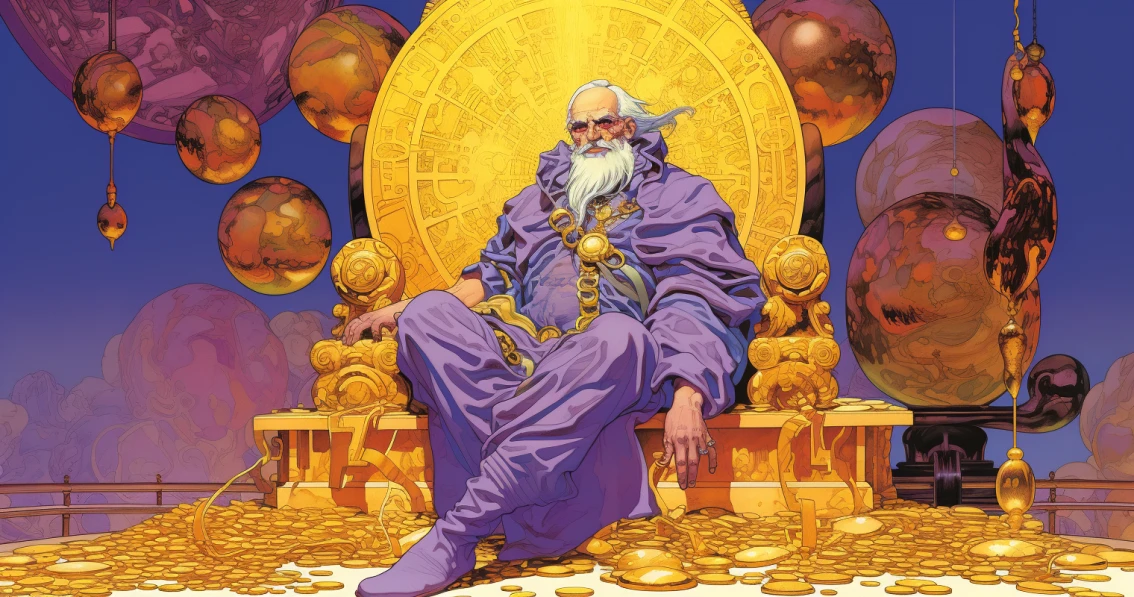Out of all social features in mobile games, leaderboards are one of the most simple, yet the most effective ones. They are more than just a rank list; leaderboards in mobile games are a potent tool that can propel engagement, player retention, and even monetization.
In this article, we’ll delve into the process of creating an effective leaderboard. We’ll discuss tailoring these strategies to your unique game dynamics and how to navigate common challenges.
So, let’s dig deeper into making your mobile game a more social, competitive, and engaging platform. With a leaderboard, every tap, swipe, and victory becomes a part of something bigger.
Why Do Players Enjoy Leaderboards?
The magic of leaderboards lies in their ability to tap into the innate human desire for recognition, competition, and progress. Let’s break down why players love leaderboards, and how you can leverage these reasons to enhance your mobile game.
1. Recognition
Every player, whether casual or dedicated, enjoys a moment of recognition.
A leaderboard announces players’ achievements, and for those at the top, it’s an exhilarating public display of their skill and effort. This sense of recognition can drive players to engage more, strive for better scores, and spend more time in your game.

2. Competition
Friendly rivalry can serve as a powerful motivator. When players see their position on the leaderboard, they can visualize the gap between themselves and the players above.
This visible ranking ignites the competitive spirit and compels players to improve their gameplay and climb higher. It’s a captivating cycle that keeps players coming back for more.
3. Progress
Leaderboards provide a tangible sense of progress. By observing their rank, players can measure their growth and improvement over time.
This visibility of progress is crucial. It provides players with a feeling of accomplishment and reinforces their motivation to continue playing.
4. Community
Leaderboards also help foster a sense of community among players. Shared goals and friendly competition can lead to increased player interaction, discussions, and camaraderie. This can create a vibrant and loyal player base, a key ingredient for long-term game success.

Common Types of Leaderboards
Leaderboards are not one-size-fits-all.
They come in different shapes and forms – each one serves unique objectives and fitting various game dynamics. Understanding the common types of leaderboards will help you determine the most suitable style for your game.
Let’s delve into some popular types common in popular mobile games.
1. Global Leaderboards
These are the grand stages of leaderboards, where all players, irrespective of their location or level, compete against each other. They offer the highest form of recognition and are ideal for games with a massive player base and a high skill ceiling.
2. Local Leaderboards
Contrasting the global scale, local leaderboards pit players against a smaller, often geographically defined group. It’s a potent tool for fostering a sense of community and rivalry among local or regional players.
3. Friends Leaderboards
Friends leaderboards tap into the player’s existing social network for a more personal and intense competition. By focusing on familiar rivals, these leaderboards can encourage more regular and engaged play.
4. Division or Tiered Leaderboards
Divided by skill level or game progress, these leaderboards ensure players compete against others at a similar level. It provides a balanced competitive environment, keeping both new and seasoned players motivated.
5. Time-Limited Leaderboards
These leaderboards reset after a specific period, like a week or a month, providing a fresh start and renewed chances for players to reach the top. Time-limited leaderboards can stimulate continued engagement by offering regular opportunities for recognition.
6. Event Leaderboards
Created for specific game events or challenges, these leaderboards drive short-term, intense competition. They can help keep your game fresh and exciting by providing new competitive arenas that differ from the usual gameplay.
Which type of leaderboard you choose depends on the type of game you have and the target audience for it. You can also combine several types of leaderboards, which is what many successful games do.
Wondering how to design and implement them? Keep on reading!

Tips for Designing Leaderboards for Your Game
Designing an effective leaderboard requires careful planning, consideration of your players’ motivations, and alignment with your game’s core mechanics.
Here are some tips to help guide you in this crucial aspect of your game design.
1. Align with Game Mechanics
The leaderboard should naturally extend from your game’s core mechanics. Ensure that the metrics used to rank players are meaningful and reflect their skill or effort within the game. A mismatch between game mechanics and leaderboard metrics can lead to player frustration and disengagement.
2. Offer Multiple Leaderboards
Consider using different leaderboards for various aspects of your game. This way, you provide multiple avenues for recognition and competition and cater to different player strengths and strategies.
3. Incorporate Fairness
To keep your leaderboard engaging for all players, consider incorporating fairness measures such as skill-based divisions or matchmaking algorithms. This can prevent discouragement among less-skilled players and maintain a balanced competitive environment.
4. Regularly Refresh
Regularly refreshing your leaderboards can keep the competition dynamic and exciting. It offers players at all levels a renewed sense of possibility and the motivation to continue playing.
5. Encourage Social Interaction
Use your leaderboard to promote social interaction. Incorporate and incentivize the use of features that allow players to share their rankings, challenge friends, or cooperate to climb ranks together. This can boost engagement and foster a sense of community among your players.
6. Provide Visible Progress
My next tip is to allow players to track their progress on the leaderboard. This can be through rank changes, point accumulation, or other meaningful indicators. Visible progress can be a powerful motivator and reinforce the players’ sense of achievement and engagement with your game.
7. Offer Incentives and Rewards
Make sure to incorporate incentives and rewards tied to leaderboard performance. This could be in the form of in-game currency, unique character skins, or other valuable resources.
These rewards serve a dual purpose: they make climbing the leaderboard more enticing and also acknowledge the skill and effort of your top players.
Examples of Leaderboards from Top Games
Now that you understand how to design and implement leaderboards, here are some examples from popular mobile games.

Leaderboards in Royal Match
Royal Match is a vibrant and entertaining match-3 puzzle game, known for its engaging gameplay and intricate level design.
Its appeal lies not just in the core mechanics, but also in the seamless integration of social features, one of which is its well-constructed leaderboard system.
The system primarily ranks players based on their level progression, which fosters a sense of rivalry as players strive to outdo their friends or other players worldwide. The leaderboards are updated in real-time, enhancing their dynamic nature and keeping the competition fresh.
Royal Match also harnesses a fundamental psychological principle: social comparison.
Players can view friends’ performance directly on the game map, thereby making the competition more personal and enticing. Furthermore, the leaderboard isn’t just about personal glory – it helps build communities, with players grouped into teams to compete in events for collective rewards.
One intriguing aspect of Royal Match’s leaderboard system is its adaptability. Depending on the event or challenge, the criteria for leaderboards can change, such as the number of points scored within a specific timeframe, or the number of special objects collected. This variability adds a layer of unpredictability and excitement to the gameplay, which in turn, boosts player engagement.
Leaderboards in Royal Match also have a balanced reward structure. Players who top the leaderboards receive substantial rewards that aid their game progress.
However, those who do not rank as high are not left empty-handed, as they receive participation rewards. This design ensures that all players feel acknowledged for their efforts, thus encouraging continued play.

Leaderboards in Call of Duty: Mobile
Call of Duty: Mobile, an acclaimed first-person shooter game, sets the bar high for adrenaline-packed action and immersive gameplay. Its multiplayer mode, featuring competitive play and social interaction, is brought to life with an innovative leaderboard system that elevates the gaming experience.
It operates on a broader scale than many other games.
It divides players into various tiers based on their Multiplayer or Battle Royale Rankings, earned through participating in ranked matches. As players accrue points from successful matches, they ascend in the leaderboard, moving through tiers that range from Rookie to Legendary.
One key feature that sets this game’s leaderboard apart is its seasonality. Each season, which typically lasts a month, the leaderboard resets, placing all players back in the initial tier. This cyclical system engenders a continual sense of urgency, fostering regular engagement as players strive to reach the higher tiers before the season’s end.
Another notable element is the blend of individual and team-based competition. Players can view their personal rankings, which incites a sense of personal achievement and progression. Simultaneously, they can form teams (or “clans”) and compete for Clan Leaderboard rankings. This feature caters to various player preferences, thus widening the game’s appeal.
Call of Duty: Mobile also incorporates leaderboards into limited-time events and challenges. The criteria for these leaderboards vary, ranging from kill counts to points accumulated.
Leaderboards in FIFA Soccer
FIFA Soccer is a football simulation game from EA Sports. It delivers a thrilling gaming experience that closely mirrors the passion and strategy of real-world football. A significant aspect of its captivating allure is its leaderboard system.
The leaderboard in FIFA Soccer operates under the division-based structure found in the game’s most popular mode, Division Rivals.
Here, players compete in online matches against others of similar skill levels. Based on the outcomes of these matches, they earn or lose points, which directly impacts their division ranking. Each division represents a certain skill bracket, and as players improve and gather more points, they can progress to higher divisions.
Unlike some other mobile games, FIFA Soccer’s leaderboard isn’t solely determined by the total points earned. Instead, it measures a player’s skill rating, which increases or decreases based on match results. This design ensures that the leaderboard isn’t dominated merely by those who play the most games, but rather by those demonstrating the most skill and strategic acumen.
The game also incorporates leaderboards into the Weekend League, an intense competition that lasts over the weekend. There’s also a feature called Top 100 Leaderboards, which showcases the best performers in Division Rivals and Weekend League.
Higher divisions and better weekly rankings yield greater rewards, including premium packs and exclusive items.

Leaderboards in Temple Run 2
Temple Run 2, an enduring favorite in the endless runner genre, adds a competitive dimension to the solo run experience with leaderboards. This game demonstrates that a leaderboard system doesn’t have to be complex to be effective.
Players in Temple Run 2 are ranked on the leaderboard based on the distance they run in a single attempt. This straightforward approach ties directly into the core mechanic of the game: running as far as possible while overcoming obstacles. It encourages players to improve their skills and reaction times to extend their runs and climb the leaderboard ranks.
The game features a global leaderboard, allowing players to measure their performance against the global player base. This structure fosters a sense of worldwide competition, driving players to challenge the best performances recorded in the game.
Adding a personal touch, Temple Run 2 also offers a friends-only leaderboard. By comparing their scores with those of their friends, players can engage in a more intimate and direct competition.
One unique element of Temple Run 2’s leaderboard is its character-based distinction. The scores for different characters are tracked separately, leading to multiple leaderboards.

Leaderboards in League of Legends: Wild Rift
League of Legends: Wild Rift, an acclaimed MOBA game with an intricate leaderboard system, which drives competition among players.
The leaderboard in Wild Rift operates on a tier-based ranking system, much like the original League of Legends game. Players are placed into different tiers—from Iron to Challenger—based on their performance in ranked matches. These tiers, each divided into four divisions, create a clear path of progression, challenging players to climb to higher ranks.
Unlike many other games, Wild Rift’s leaderboards don’t solely rely on win rate. Instead, they implement a Matchmaking Rating (MMR) system. The MMR increases or decreases based on match outcomes, taking into consideration factors such as the team’s overall performance and the skill level of opponents. This nuanced approach to ranking encourages consistent high-level play and teamwork, rather than merely accumulating victories.
A significant part of Wild Rift’s leaderboard appeal lies in its competitive seasons, which typically last for a few months. At the end of each season, the leaderboard resets, and players receive rewards based on their final rank. This cyclical system fuels the drive to improve and reach higher ranks before each season ends.
In terms of rewards, Wild Rift employs a tier-based reward system. Players receive end-of-season rewards based on their final rank, with higher tiers yielding more valuable rewards.

Leaderboards in Coin Master
Coin Master is a popular casual mobile game, with interesting leaderboards.
At the core of Coin Master’s leaderboard is its engaging Raid Madness and Attack Madness events. These recurring events urge players to accumulate as many specified actions (raids or attacks) as possible within a set timeframe.
The leaderboards track and rank the players based on these actions and foster a competitive atmosphere that aligns closely with the game’s core mechanics.
Unlike leaderboards based on overall progression or skill, Coin Master’s event-based leaderboards reset after each event, offering a level playing field. This periodic reset provides opportunities for all players to compete for the top spots.
Moreover, the leaderboards aren’t hidden in a separate menu; instead, the player’s rank and progression toward the next reward are prominently displayed on the event page.
A defining feature of Coin Master’s leaderboards is the milestone rewards.
Instead of awarding prizes only at the end of the event, players earn rewards each time they reach specific action milestones. This immediate gratification not only acknowledges players’ progress but also incentivizes them to continue playing and hit the next milestone.
Implementing Leaderboards in Mobile Games: Data Structures
When it comes to the technical aspect of implementing leaderboards, understanding the most suitable data structures is crucial. The choice of data structure influences the efficiency and performance of the leaderboard, especially as your game scales.
Here are some commonly used data structures.
1. Arrays
Arrays are a simple and efficient data structure for leaderboards, especially when the player base is relatively small. They can hold a list of player objects, each containing player ID, score, and other relevant data.
However, as the player base grows, operations like insertion and sorting can become expensive in terms of time complexity.
2. Linked Lists
Linked lists can be a good choice when the leaderboard needs frequent updates, as they allow for efficient insertion and deletion operations. However, retrieving a player’s rank or displaying the top players can be slower compared to other data structures.
3. Binary Search Trees (BST)
BSTs offer a balance of efficient read and write operations, making them an excellent choice for dynamic leaderboards with frequent updates.
Particularly, self-balancing BSTs like AVL trees and Red-Black trees ensure that operations like insertion, deletion, and searching stay relatively fast, even with a large player base.
4. Hash Maps
Hash maps can provide quick access to player data using unique player IDs as keys. This makes it efficient to update individual scores, but sorting players to display the leaderboard can be computationally intensive.
5. Priority Queues (Heap)
A max-heap can serve as a great data structure for maintaining a leaderboard, as it keeps the highest-scoring player at the top. It allows efficient access to top players and offers relatively fast updates, but it’s not as quick when it comes to searching for players who are not at the top.
6. Distributed Databases
For very large-scale games, distributed databases (like NoSQL databases) can be used to maintain leaderboards. They allow the data to be partitioned across multiple servers, ensuring fast read and write operations and providing high scalability.







Comments